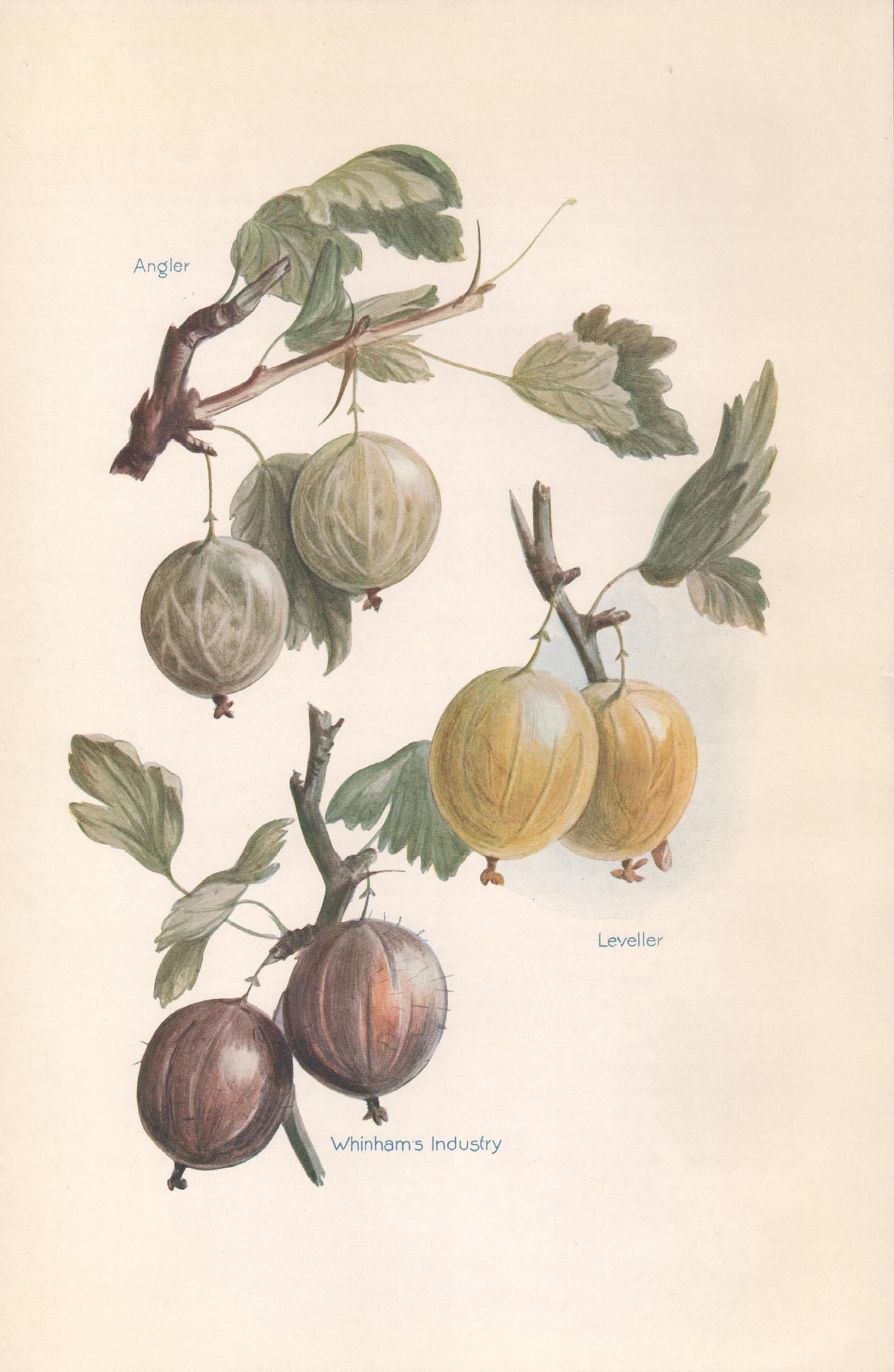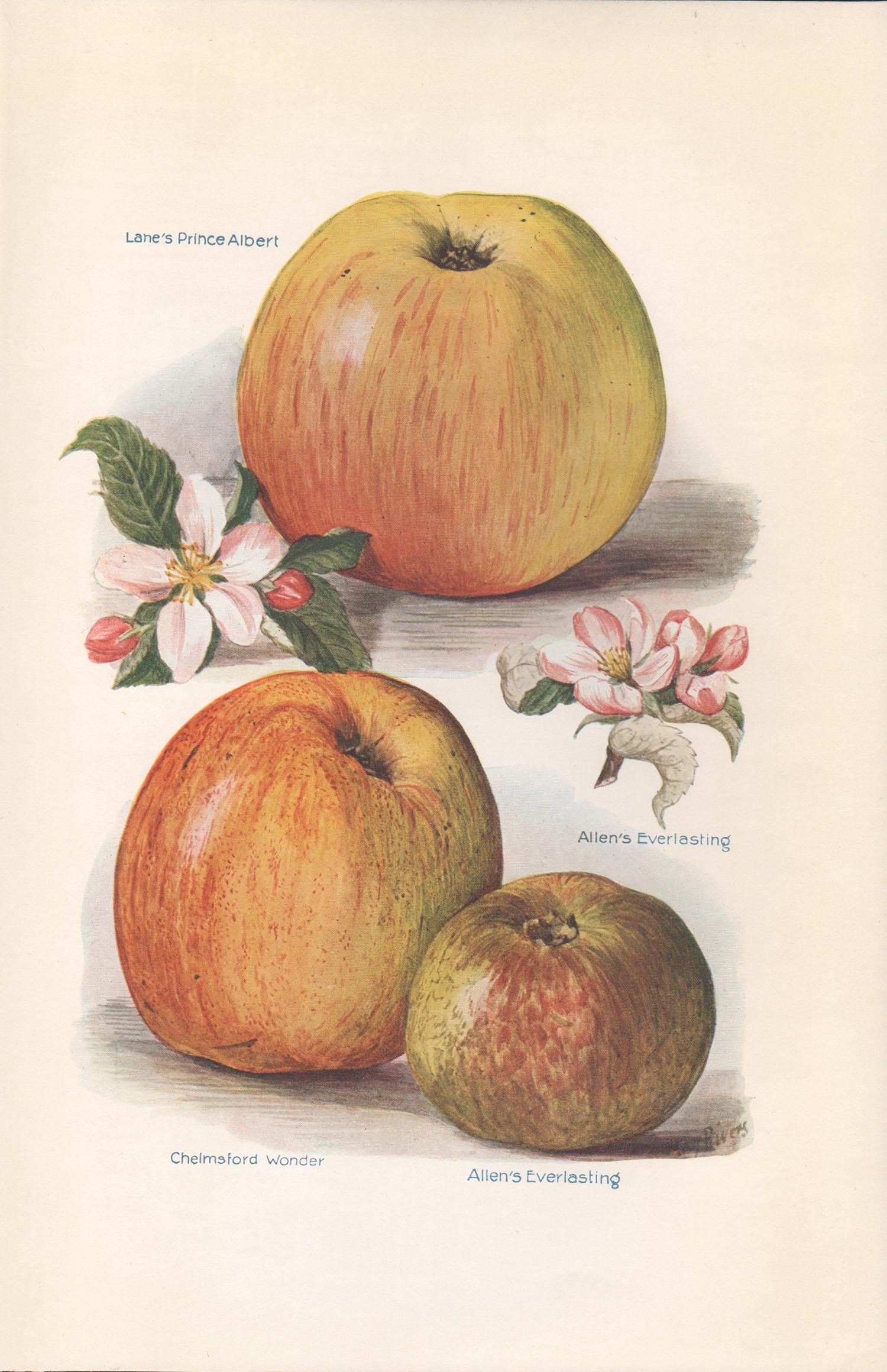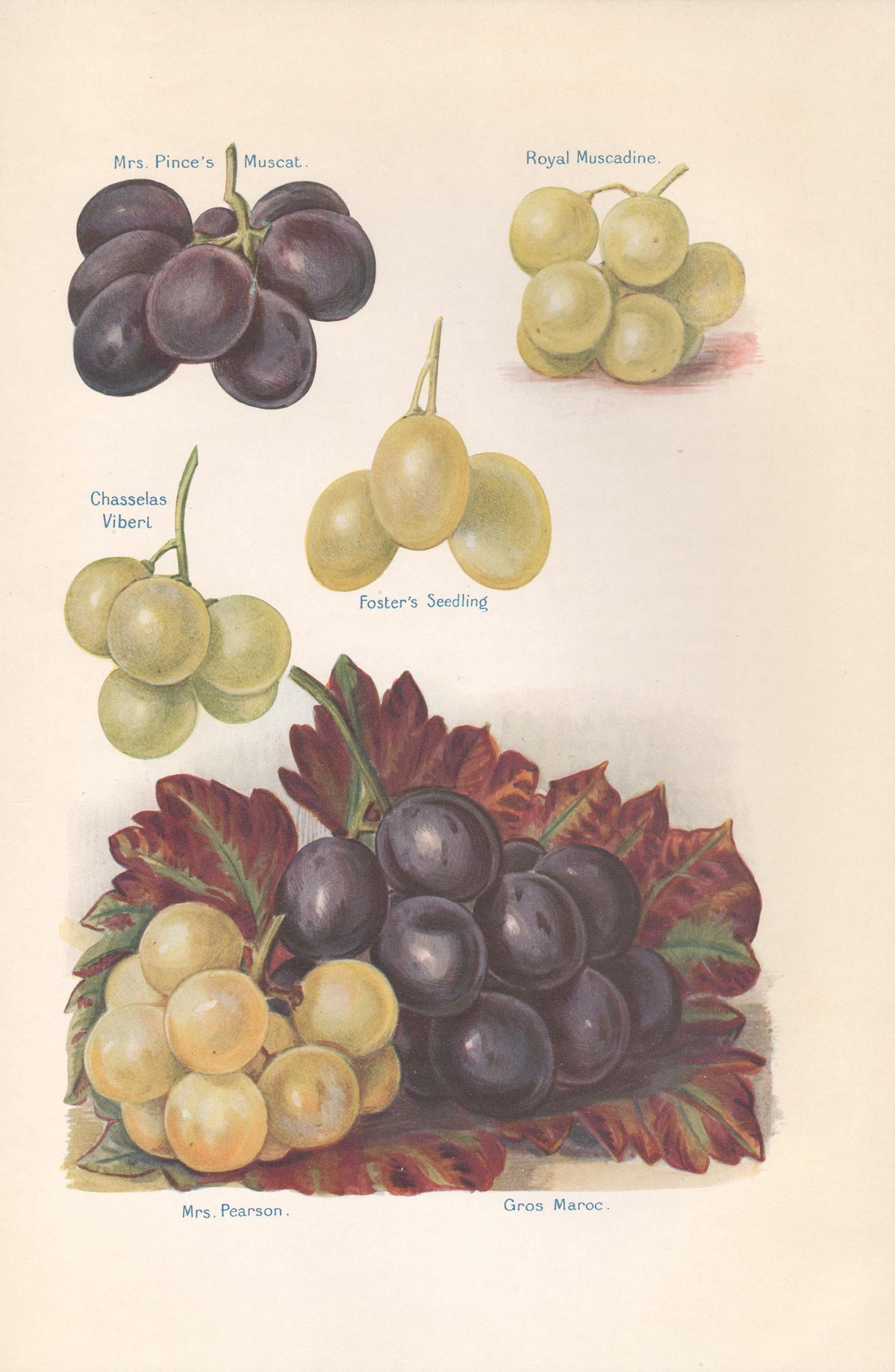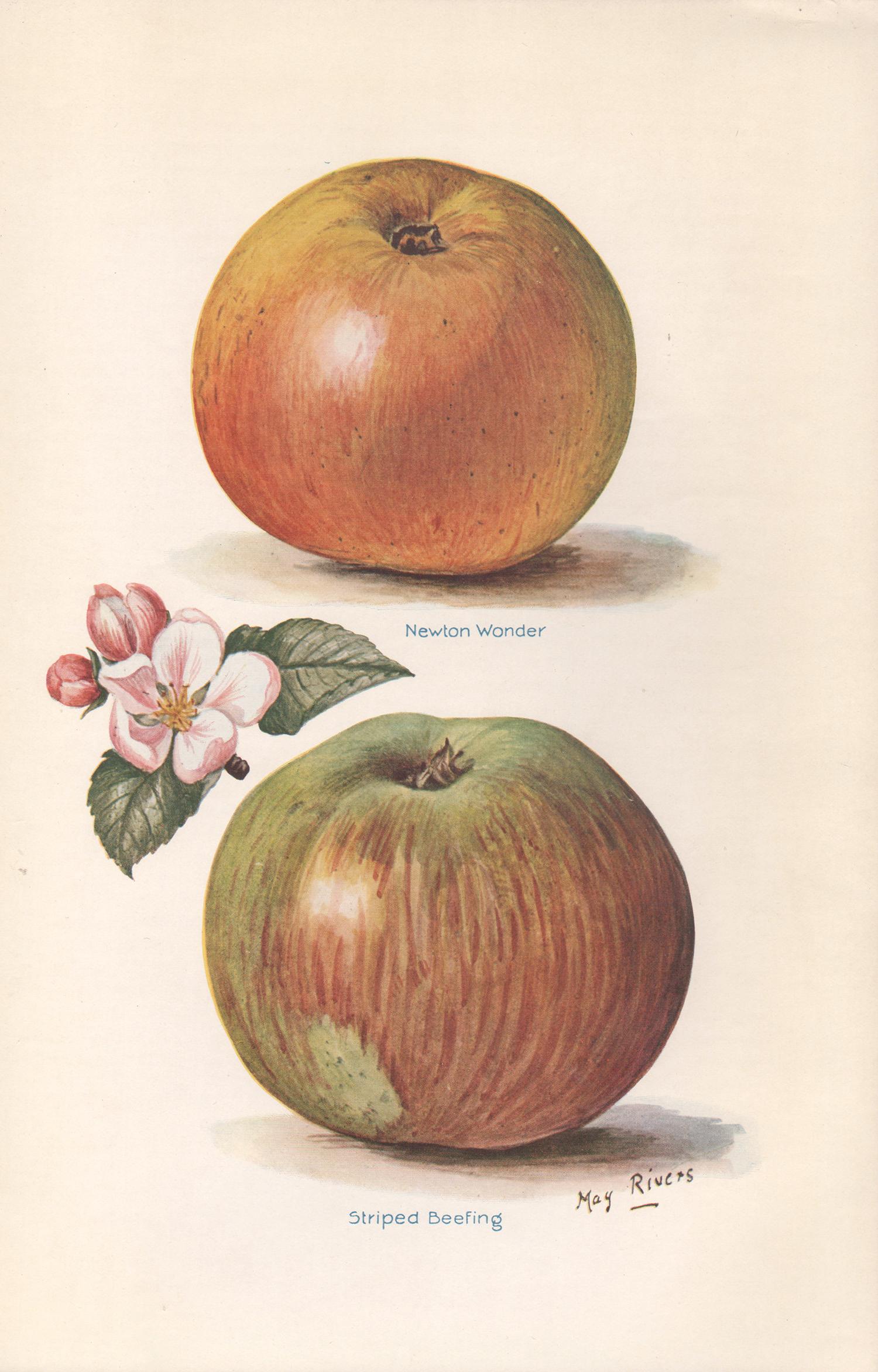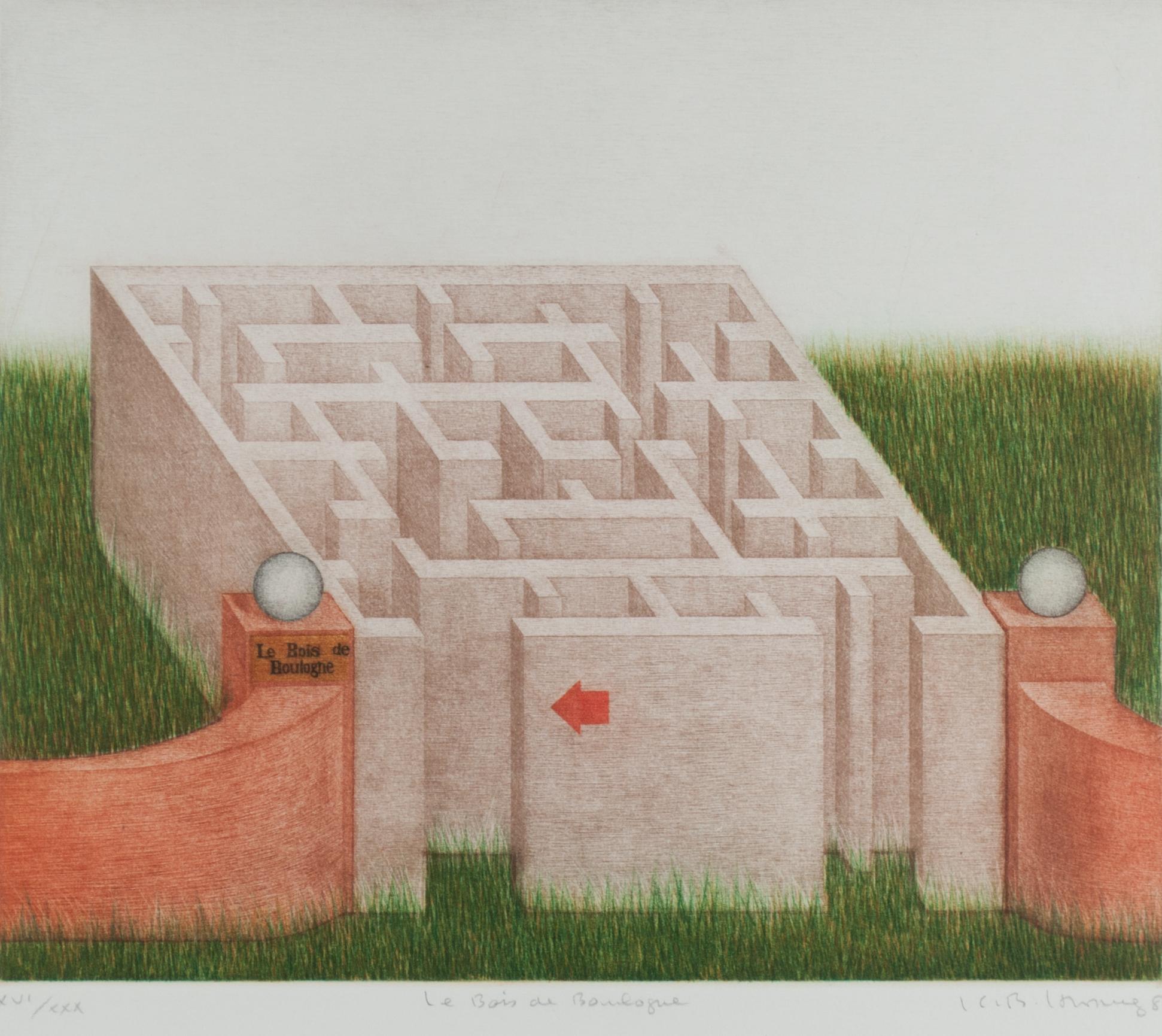Items Similar to Plate LXXVIII Pears (Valley, Petit Russelet, Doyenne, or Saint Michael, ...
Want more images or videos?
Request additional images or videos from the seller
1 of 9
George BrookshawPlate LXXVIII Pears (Valley, Petit Russelet, Doyenne, or Saint Michael, ...1804
1804
About the Item
Plate LXXVIII Pears (Valley, Petit Russelet, Doyenne, or Saint Michael, and the Russselet de Rheims, or Gross Russelet varities).
Aquatint, engraving with some stipple, printed in colors with hand finishing, 1804-1812
Engraved signature on the bottom left
From: Pomona Britannica or A Collection of the Most Esteemed Fruits (90 Plates)
Published: White, Cochrane & Co., E. Lloyd and W. Lindsell, London: [1804-] 1812
Format: Folio size, 1st edition
Printer: Thomas Bensley (active c. 1760-1935)
Considered to be a masterpiece of natural history illustration
Condition: Very good
Publication legend lower center: “Painted & Published as the Act Directs by the Author G. Brookshaw” followed by date, varying from 1804 to 1812.
Title page credits: “Printed for the author by T. Bensley, Bolt Court, Fleet Street. Published by White, Cochrane and Co. Fleet Street; E. Lloyd, Harley Street; and W. Linsell, Corner of Wigmore Street.”
George Brookshaw (1751-1823) (after)
from Pomona Britannica; Or, a collection of the most esteemed fruits at present cultivated in this country… selected principally from the Royal Gardens at Hampton Court
T. Bensley, London (printer)
White, Cochrane & Co., E. Lloyd and W. Lindsell, London: [1804-] 1812
Folio edition
Stipple engravings, printed in color, finished by hand
17.5 x 14 inches, plate mark, average approximate
22 x 17 inches, overall, average approximate
Pomona Britannica, or a Collection of the Most Esteemed Fruits at present cultivated in the country…selected principally from the royal gardens at Hampton Court…accurately drawn and coloured from nature, with full descriptions was published in London from 1804—1812. Comprising 90 aquatint engravings, including 256 depictions of British fruit, after paintings by George Brookshaw. Published in London and engraved by R. Brookshaw and H. Merke.
George Brookshaw (1751—1823) was born in Birmingham, England where he was apprenticed to Samuel Troughton (d. 1783), a Birmingham painter and japanner. According to a recent blog post related to St. Philips Cathedral, Birmingham, England, entitled In Search of Sobieski Brookshaw, by Gill Partridge, he may have received some art training from his father, also named George Brookshaw, who is listed as an engraver in a document dated 1751. George Brookshaw’s brother, Richard Brookshaw (1736—c.1804) was a portrait painter and engraver well versed in mezzotint and copperplate engraving techniques, and may have instructed his brother.
In 1777, Brookshaw moved from Birmingham to London and began a celebrated career building fine cabinets detailed with hand-painted botanical and pomological motifs. Shortly afterward, in 1778, he married Sobieski Grice (1749—1811), daughter of William Grice, a prosperous gunsmith.The Prince of Wales was the most distinguished of Brookshaw’s well-heeled patrons, and today examples of Brookshaw’s cabinetry may be seen at the Victoria & Albert Museum, London. According to church records noted in Gill Partridge’s post, both George Brookshaw and Sobieski Grice were baptized at the Birmingham Cathedral. In his cabinet-making shop, Brookshaw also offered lessons in flower painting to ‘Ladies of Taste and Fashion’.
During the mid 1790s, it appears his furniture-making business went bankrupt, and he led his life under an assumed name, G. Brown. In 1991, Lucy Wood wrote two articles in which she drew the connection between G. Brown and George Brookshaw. During his years of anonymity, Brookshaw worked as an illustrator of botanical books and gave flower-painting lessons, which may have been his primary source of income. Apparently, the marriage dowry he enjoyed while married to Sobieski Grice was lost after their marriage dissolved. Brookshaw returned to public view as the earliest parts of Pomona Britannica were issued.
In Flower and Print Books of the 18th and Early 19th Centuries, Gordon Dunthorne extolls the virtues of George Brookshaw’s large folio edition. “One of the eminent English artists of the early nineteenth century is George Brookshaw, who issued in 1812, Pomona Britannica. Ninety aquatint plates, printed in colour and on a scale comparable to Thornton’s Temple of Flora, depict the fruit grown around London and particularly in the royal gardens at Hampton Court. In Aquatint Engravings, George Brookshaw’s Pomona Britannica is described by S. T. Prideaux as “one of the finest colour plate books in existence.” In many of these plates the lovely mellow tones of the fruit glow against the dark or light brown backgrounds.”
Courtesy Joel Oppenheimer
Brookshaw’s Pomona Britannica is widely considered the finest English color plate natural history study of fruit. Intended to accurately record the best available varieties and encourage their cultivation, it was first published in 1804-1812 in a large folio version containing 90 plates of 256 varieties, and then in a smaller quarto format in 1816 and 1817 that contained 60 plates of 174 varieties. Both versions feature fruit then grown in and around London, especially at the Royal Gardens at Hampton Court. Varieties include tree fruits such as apples, peaches, cherries, plums, and figs as well as pineapples, melons, berries and grapes.
"The folio and quarto editions of Brookshaw maintained a high quality of printing, employing the color-printed stipple method, which approximates the supple coloration, tones and textures achieved with watercolor painting. However, the folio version and the quarto version differ in various respects besides size. The folio illustrations are somewhat bolder, against dark brown backgrounds that accentuate the fruit as it seems to “jump off the page.” In contrast, the quarto edition prints are more spare and delicate against light backgrounds. Another difference is that the folio includes melons on ledges and pineapples, while the quarto does not. It may be posited that the style of the quarto plates are related to Brookshaw’s other vocations as an author of drawing instruction books and designer of painted furniture. Perhaps they were intended to serve as illustrations that would lend themselves to copying in watercolor for drawing practice or as models for decorative arts designers.
George Brookshaw was born in Birmingham, England, and early in his career taught the art of watercolor. He set up a business as a cabinet maker about 1777 and created designs for English neoclassical furniture, which are still highly prized by contemporary collectors. He supplied his painted furniture to an aristocratic and fashionable clientele until the 1790s, but after 1795 he abandoned cabinet making. Later he became a botanical artist, producing the lavish folio treatise Pomona Britannica (1804-12), depicting 256 varieties of fruit grown in Britain, many of them drawn from specimens in the Royal Gardens at Hampton Court. A smaller quarto edition of this work was issued in 1817. Brookshaw also published A New Treatise on Flower Painting; or Every Lady her own Drawing Master and two companion volumes on painting birds and fruit. He stated that these instructional manuals presented a method of painting that was so effective that he himself could not tell his pupils’ copies from his own work."
Courtesy Glazer Gallery
- Creator:George Brookshaw (1751 - 1823, British)
- Creation Year:1804
- Dimensions:Height: 18.75 in (47.63 cm)Width: 15.875 in (40.33 cm)
- Medium:
- Movement & Style:
- Period:
- Condition:
- Gallery Location:Fairlawn, OH
- Reference Number:
About the Seller
5.0
Recognized Seller
These prestigious sellers are industry leaders and represent the highest echelon for item quality and design.
Platinum Seller
These expertly vetted sellers are 1stDibs' most experienced sellers and are rated highest by our customers.
Established in 1978
1stDibs seller since 2013
711 sales on 1stDibs
Typical response time: 1 hour
Associations
International Fine Print Dealers Association
- ShippingRetrieving quote...Ships From: Fairlawn, OH
- Return PolicyA return for this item may be initiated within 10 days of delivery.
More From This SellerView All
- Dining Room with Horse PaintingBy Julia JacquetteLocated in Fairlawn, OHDining Room with Horse Painting Aquatint on Hahnemuhle Copperplate paper, 2008 Signed in pencil and numbered lower left Published by the Print Club of Cleveland, Publication No.88, 2...Category
Early 2000s Contemporary Still-life Prints
MaterialsAquatint
- Cluster of Grapes in Folded NapkinBy Stone RobertsLocated in Fairlawn, OHCluster of Grapes in Folded Napkin Etching, 2006 Signed and numbered by the artist (see photo) Edition: 25 (8/25), see photo Printed on Hahnemuhle pa...Category
21st Century and Contemporary American Realist Prints and Multiples
MaterialsEtching
- Through Wind and Water (Notre Dame Gargoyle)By John Taylor ArmsLocated in Fairlawn, OHSigned in pencil Edition: 75 Gargoyle Series No. 7 This impression probably printed by David Strang, 1937-38 Sheet: 9 1/4 x 11 1/4" Reference: William Dolan Fletcher, John Tay...Category
1920s American Realist Still-life Prints
MaterialsEtching
- Holiday Greeting Card for Madame R. G. Michel & Family (Carriage Clock, VaseBy Annapia AntoniniLocated in Fairlawn, OHHoliday Greeting Card for Madame R. G. Michel & Family (Carriage Clock, Vase & Flowers) Etching & color aquatint, 1986 Signed in pencil lower right Printed on BFK Rives paper Annapi...Category
1980s Contemporary Still-life Prints
MaterialsEtching
- Holiday Greeting Card for Madame R. G. Michel & Family (Goldfish in bowl, vaseBy Annapia AntoniniLocated in Fairlawn, OHHoliday Greeting Card for Madame R. G. Michel & Family (Goldfish in bowl, vase & red flowers) Etching & aquatint printed in colors, 1989 Signed in pencil lower right Folded Holiday c...Category
1980s French School Still-life Prints
MaterialsEtching
- Untitled (Still Life)Located in Fairlawn, OHUntitled (Still Life) Etching, aquatint and soft ground, 2001 Signed in pencil (see photo) Edition: 260 Published by the Print Club of Cleveland, Publication 80, 2002 Printed by Felix Harlan at Harlan and Weaver, New York William Bailey, Modernist Figurative Painter, Dies at 89 He swathed his nudes and still lifes of eggs, vases, bottles and bowls in a breathless, deceptively serene atmosphere heavy with mystery. The painter William Bailey in 2009. He was never given a career survey in a major museum, but his influence, particulary on students at Yale, was deep.Credit...Ford Bailey By William Grimes for the New York Times April 18, 2020 William Bailey, whose pristine, idealized still lifes and female nudes made him one of the leading figures in the return of figurative art in the 1980s, died on April 13 at his home in Branford, Conn. He was 89. His death was confirmed by his daughter, Alix Bailey. Beyond his painting, Mr. Bailey influenced generations of students in his many years as a teacher at the Yale School of Art. In some of his best-known work, Mr. Bailey arranged simple objects — the eggs, bowls, bottles and vases that he once called “my repertory company” — along a severe horizontal shelf, or on a plain table, swathing them in a breathless, deceptively serene atmosphere heavy with mystery. His muted ochres, grays and powdery blues conjured up a still, timeless world inhabited by Platonic forms, recognizable but uncanny, in part because he painted from imagination rather than “They are at once vividly real and objects in dream, and it is the poetry of this double life that elevates all this humble crockery to the realm of pictorial romance,” Hilton Kramer wrote in The New York Times in 1979. Mr. Bailey’s female figures, some clothed in a simple shift or robe and others partly or entirely nude, are disconcertingly impassive, implacable and unreadable, fleshly presences breathing an otherworldly air. The critic Mark Stevens, writing in Newsweek in 1982, credited Mr. Bailey with helping to “restore representational art to a position of consequence in modern painting.” But his version of representation was entirely idiosyncratic, seemingly traditional but in fact “a modernism so contrarian,” the artist Alexi Worth wrote in a catalog essay for the Betty Cuningham Gallery in 2010, “that it feels, despite its historical sophistication, almost like a brand of outsider art.” William Harrison Bailey was born on Nov. 17, 1930, in Council Bluffs, Iowa. His father, Willard, worked in radio advertising and moved the family from city to city in the Midwest. Bill was in his early teens when his father died. His mother, Marjorie (Cheyney) Bailey, was a homemaker who later worked as an accountant for her second husband, Fred...Category
Early 2000s Contemporary Still-life Prints
MaterialsEtching
You May Also Like
- Gooseberries, English antique botanical fruit food chromolithograph print, 1924Located in Melbourne, VictoriaGooseberry Varieties - 'Angler, Leveller, Whinham's Industry' Early 20th century fruit chromolithograph, from Horace Wright's 'Fruit Growers' Guide', 1924. 270mm by 180mm (sheet)Category
1920s English School Still-life Prints
MaterialsLithograph
- Apples, English antique botanical fruit food chromolithograph print, 1924Located in Melbourne, VictoriaApple Varieties - 'Lane's Prince Albert, Chelmsford Wonder, Allen's Everlasting' Early 20th century fruit chromolithograph, from Horace Wright's 'Fruit Growers' Guide', 1924. 270mm...Category
1920s English School Still-life Prints
MaterialsLithograph
- Grapes, English antique botanical fruit food chromolithograph print, 1924Located in Melbourne, VictoriaGrape Varieties - 'Mrs Pince's Muscat, Royal Muscadine, Chasselas Vibert, Foster's Seedling, Mrs Pearson, Gros Maroc'. Early 20th century fruit chromolithograph, from Horace Wright'...Category
1920s English School Still-life Prints
MaterialsLithograph
- Apples, English antique botanical fruit food chromolithograph print, 1924Located in Melbourne, VictoriaApple Varieties - 'Newton Wonder, Striped Beefing' Early 20th century fruit chromolithograph, from Horace Wright's 'Fruit Growers' Guide', 1924. 270mm by 180mm (sheet)Category
1920s English School Still-life Prints
MaterialsLithograph
- The tortoise and the hareLocated in Ljubljana, SIThe tortoise and the hare. Original color aquatint and etching, 1983. Edition of 150 signed and numbered impressions on Arches paper. Art and Sport portfolio: The Yugoslav Olympic Committee of the Winter Olympic Games Sarajevo...Category
1980s Conceptual Still-life Prints
MaterialsEtching, Aquatint
- Le Bois de BoulogneBy K.B. (Kyu-Baik ) HwangLocated in Ljubljana, SIOriginal color aquatint and etching, 1980. Edition of 30 signed and numbered impressions on Arches paper. Kyu-Baik Hwang is contemporary painter and printmaker, from South Korea. He served in the military during the Korean War, and after the war he began to paint. Latter, he traveled across Europe and America and got inspired by many of their cultures and artists. Displacing ordinary objects from their original environments, typical for his works is often compared to surrealist’s art from the 20th-century. Unlike surrealists, who rejected mind control and try to show the world of the unconscious, Hwang stimulates viewers’ imagination. He presents an extra-ordinary, imaginary world through ordinary spaces and objects, using different methods from printmaking to painting. The Bois de Boulogne...Category
1980s Contemporary Still-life Prints
MaterialsAquatint, Etching
